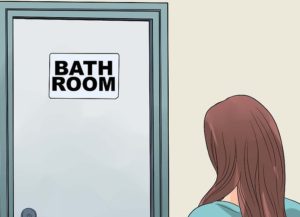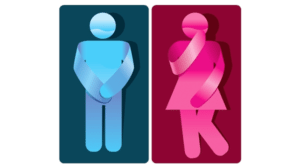Incontinence- Effective Management and Prevention
Incontinence is a common problem which affects both men and women, young and old. As physiotherapists we often see patients who suffer from incontinence as a result of pregnancy, after childbirth or during menopause. Chronic conditions, such as diabetes, asthma and some others, can also contribute to incontinence. Even if the above mentioned does not apply patients can still experience incontinence. The good news is, though, that with the right treatment this problem can be successful managed and often even cured.
Before we look at what can be done for this issue let’s review what incontinence actually is. Incontinence can be used to describe involuntary loss of urine (urinary incontinence) or faeces (faecal incontinence). Urinary incontinence is generally more common.
The following short questionnaire, taken from The Continence Foundation of Australia can help you determine whether you might be suffering from incontinence.
BLADDER QUESTIONNAIRE:
- Do you sometimes feel you have not completely emptied your bladder?
- Do you have to rush to use the toilet?
- Are you frequently nervous because you think you might lose control of your bladder or bowel?
- Do you wake up twice or more during the night to go to the toilet?
- Do you sometimes leak before you get to the toilet?
- Do you sometimes leak when you lift something heavy or exercise?
- Do you sometimes leak when you change from a seated or lying position to a standing position?
- Do you plan your daily routine around where the nearest toilet is?
If you answered ‘yes’ to any of these questions you may have a bladder control problem.
So what can be done about it? The first step is to see your GP who will ensure that the incontinence is not caused by a serious underlying condition. This often involves undergoing certain tests such as an ultrasound, blood tests etc. Once serious conditions are ruled out the next step is to see a physiotherapist who specialises in women’s health.
A thorough pelvic floor assessment will form a large part of the initial consultation. This will help identify the type of incontinence which you suffer from. The most common types are stress, urge or mixed incontinence. Stress incontinence is typically associated with triggers such as laughing, coughing, lifting or playing sport. Urge incontinence, on the other hand, can best be described as a sudden need to urinate and is often referred to as an overactive bladder. Typical triggers include approaching the home/toilet, the sound of running water and cold weather.
Pelvic floor muscle exercises are considered first-line treatment for stress incontinence. They can also greatly help with urge incontinence. Did you know that your pelvic floor muscles share the same nerve supply as your core muscles – the muscles which stabilise your spine and joints? This is why before starting specific pelvic floor exercises it’s important that you work on strengthening your core muscles. Your physiotherapist will use Real Time Ultrasound to assess your core muscles and teach you how to engage them correctly.
Once your core muscles are working properly you will move on to pelvic floor exercises. Real Time Ultrasound will once again be used to ensure correct activation of the pelvic floor muscles. Both you and your physiotherapist should clearly see on the screen a pelvic floor lift. Your physiotherapist will also check to make sure that only the pelvic floor muscles are working, not your buttocks.
The next step is progress the exercises by making them functional. While initially you will most likely do the exercises lying down they will soon be progressed to sitting and consequently standing. Then your physiotherapist will build them into the other exercises you do, such as squats. When exercises alone are not enough physiotherapy modalities such as ultrasound and phonophoresis can help.
Below are some tips which you can implement to prevent and manage incontinence.
- Never go to the toilet ‘just in case’. By going just in case, you are, in a sense, telling your pelvic floor muscles that they don’t have to work because you have taken care of your bladder by emptying it. This applies also to children, not just adults.
- Never stress or strain on the toilet. This puts extra strain on the pelvic floor.
- Make sure that you are drinking at least 1.5L of water daily. Water doesn’t irritate our bladder. The biggest irritants are coffee, black tea, energy drinks and alcohol, so try to cut back on these.
- Get plenty of fibre in your diet. This will help to keep you regular. Constipation typically results in people straining on the toilet, which puts extra pressure on the pelvic floor. Make sure you are eating around five servings of raw fruit and vegetables daily.
This article was written by Margarita Gurevich from health point physiotherapy.
If you need a physiotherapist, use our search to find one near you – doctors.com.au.

 Need a doctor now? Speak to a GP in minutes via phone or video consult.
Need a doctor now? Speak to a GP in minutes via phone or video consult.
This is a topic that’s near to my heart… Cheers! Exactly where are your contact details though?